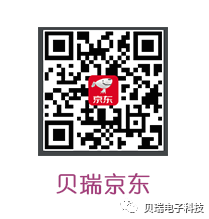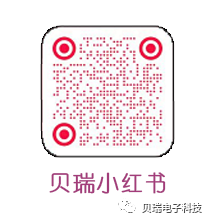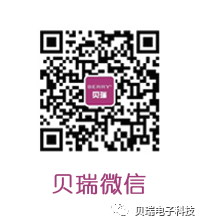The commonly used wireless transmission methods for medical IoT include 5G technology, WiFi technology, and Bluetooth communication technology. From a technical perspective, 5G and WiFi have advantages such as high bandwidth and fast transmission speeds, primarily used for communication between computers, smartphones, etc. Bluetooth communication technology has the benefits of low power consumption and fast transmission rates, making it the currently suitable short-range wireless communication technology for medical IoT.
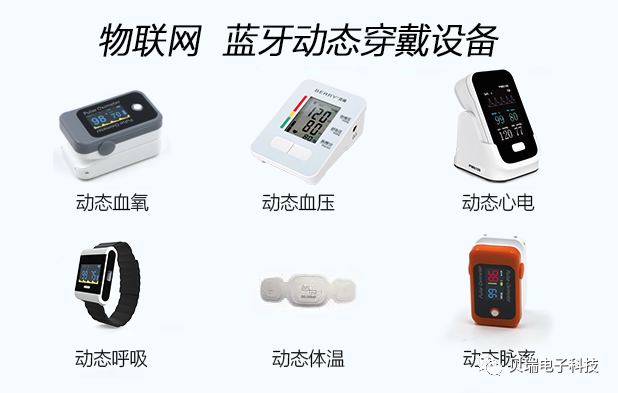
With the continuous development of smart healthcare and the accelerated transformation of medical digitization, wearable monitoring devices can also play an important role in professional medical diagnostics. For example, daily monitoring of chronic disease patients, follow-up visits after discharge, or remote diagnosis, the benefits are evident:
1. It can solve the problem that traditional monitoring devices can only be used in hospitals, while patients often experience diseases outside the hospital;
2. It reduces the number of visits patients make to hospitals: alleviating the burden of back-and-forth travel, saving medical expenses, as well as the time and economic costs incurred from work loss;
3. It alleviates the pressure on hospital consultations: for example, the current shortage of radiologists can be mitigated by remote dynamic electrocardiograms, and efforts are being made to promote the construction of remote ECG centers;
4. It transforms passive medical care into proactive medical care: dynamic monitoring captures sporadic abnormal conditions, allowing patients and doctors to receive early warnings about hidden diseases, enabling more timely and efficient detection of conditions.
The realization of the above scenarios relies on monitoring data meeting “medical standards” as a foundation. This is because “clinical errors are not allowed” in the medical industry; any possible errors can interfere with diagnoses and pose health and safety risks to patients.
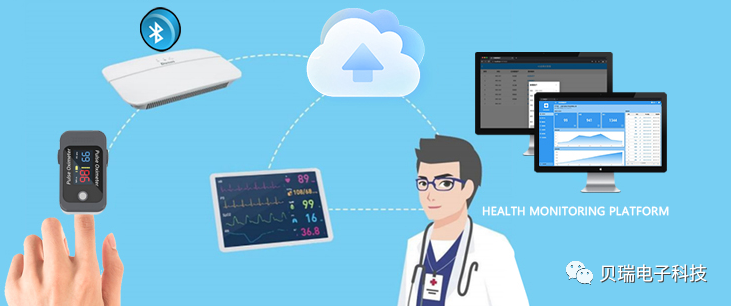
This means that not only must the wearable sensing devices themselves meet professional medical-grade requirements, but also the Bluetooth data gateway, as the core hardware for dynamic vital sign monitoring, must meet the “medical-grade standards” to be valid. This requires that data transmission must not be interrupted, and we believe that “medical-grade standards” include:
1. The user’s medical data must not be leaked;
2. Medical data must not be interrupted, lost, or disordered during transmission;
3. The transmission method and protocol interface must meet requirements and be accepted by medical institutions.
Our company recently launched a Bluetooth gateway product, which can connect up to 15 different types of Bluetooth medical devices (such as pulse oximeters, sleep monitors, multi-parameter monitors, blood pressure monitors, smart bed blankets, etc.) simultaneously and upload their data in real-time to a cloud server, which is then displayed in real-time on a web-based console, achieving the purpose of remote monitoring.
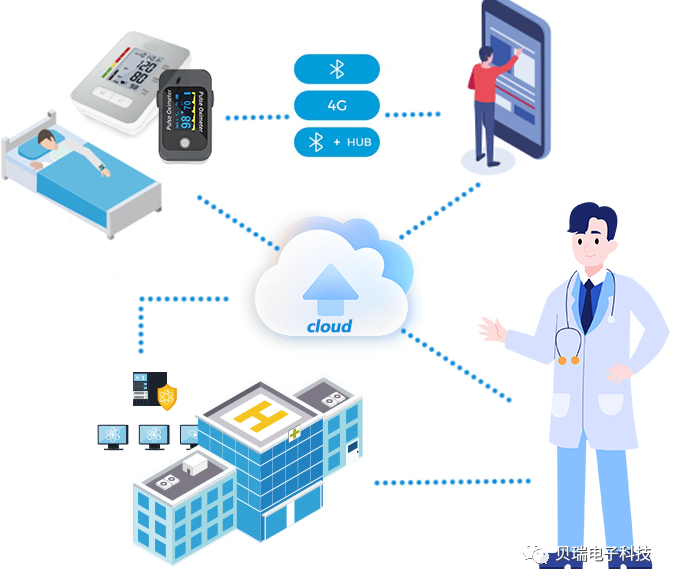
The Bluetooth gateway is a device that integrates Bluetooth communication modules and network communication modules (such as Ethernet, wireless LAN, 4G cellular networks, etc.) to collect information sent by Bluetooth devices and upload it to a backend server.
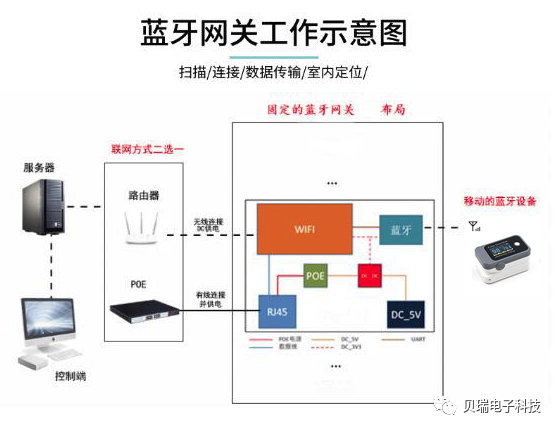
The Bluetooth gateway mainly has scanning, connection, and data transmission functions. It can be flexibly used in medical institutions, nursing homes, rehabilitation centers, pet medical institutions, and personal households to achieve sensor data collection and other application scenarios.
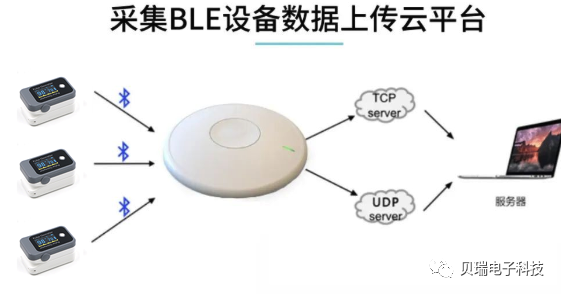
Medical-Grade Bluetooth Gateway
Medical data relates to the health and safety of individuals. Any data loss, disorder, or delay during collection and transmission may interfere with and misjudge the true condition of the subject being examined. Therefore, the safety and stability of medical device networking are critical indicators.
The Bluetooth gateway can meet various needs, supporting multiple Bluetooth versions. Its unique strong scanning mode can better reduce 2.4G wireless interference, lower packet loss rates, and ensure data transmission security. Patients wearing Bluetooth pulse oximeters, blood pressure monitors, multi-parameter monitors, and other Bluetooth vital sign monitoring devices will have their vital sign data automatically transmitted to the Bluetooth gateway, which will then relay the collected data back to the user server via Wi-Fi, Ethernet, or 4G, achieving real-time data synchronization, allowing healthcare personnel to monitor and review vital sign data on a computer data platform.
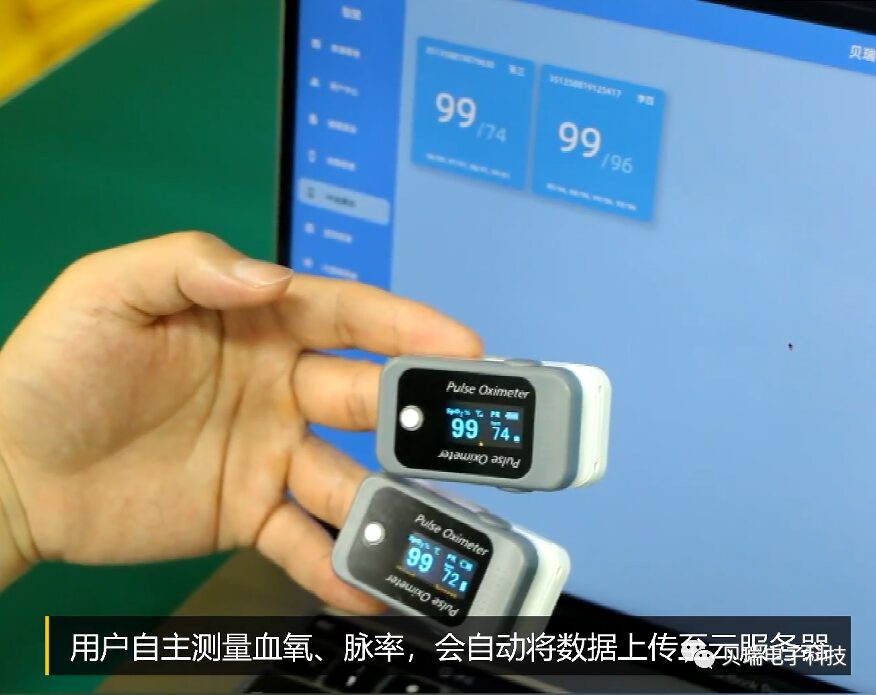
Within the medical IoT ecosystem, a single Bluetooth gateway can collect data from multiple Bluetooth vital sign devices. It supports data caching, data retransmission, and full transparency, ensuring that any important vital sign data can be transmitted completely and accurately. In case of network anomalies, it can also self-repair, fully ensuring the authenticity and completeness of the data.
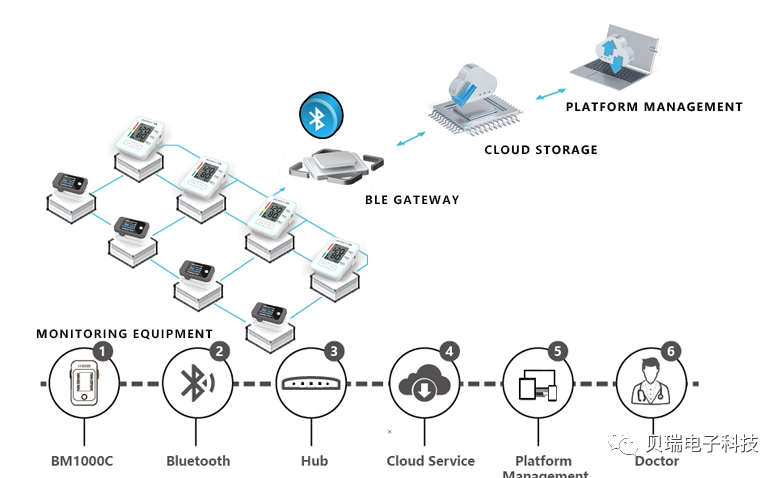
Shanghai Beirui Electronic Technology Co., Ltd. looks forward to making Bluetooth connections simpler, which will provide stronger technical support for the further development of future medical IoT. Only by breaking down the barriers to large-scale access of Bluetooth devices and reducing redundant investments in solution integration can the Bluetooth medical IoT ecosystem be formed sooner.
Currently, the Bluetooth gateway product developed by Beirui is easy to operate, plug-and-play, and supports various types of Bluetooth medical devices, with low shared costs. Usage scenarios include hospitals, nursing homes, rehabilitation centers, confinement centers, sports venues, and households. This allows a single healthcare worker to remotely monitor hundreds of patients distributed across different branches, departments, and wards; children can remotely monitor multiple elderly family members living in different cities (requires cooperation with WeChat mini-program). Our Bluetooth gateway product has already demonstrated immense value in practical applications such as blood oxygen and pulse rate monitoring in hospital settings.
